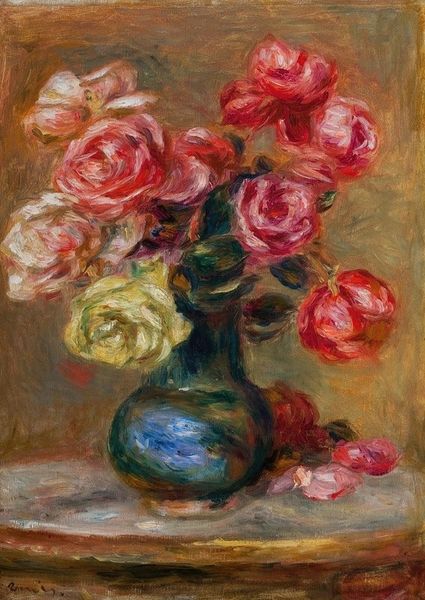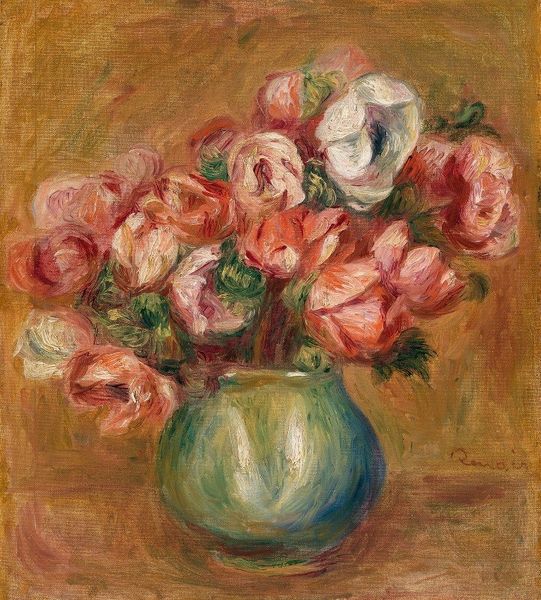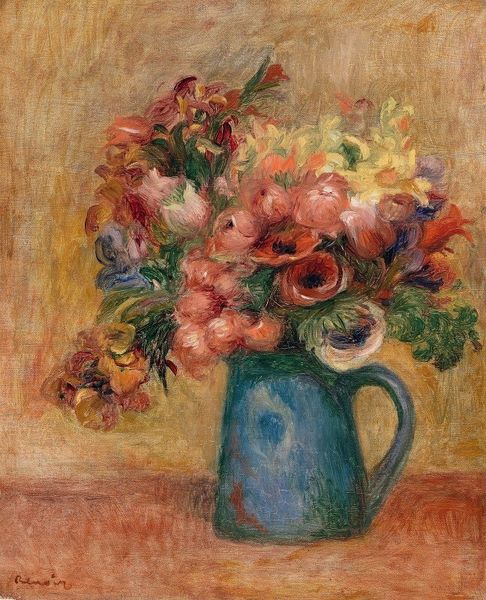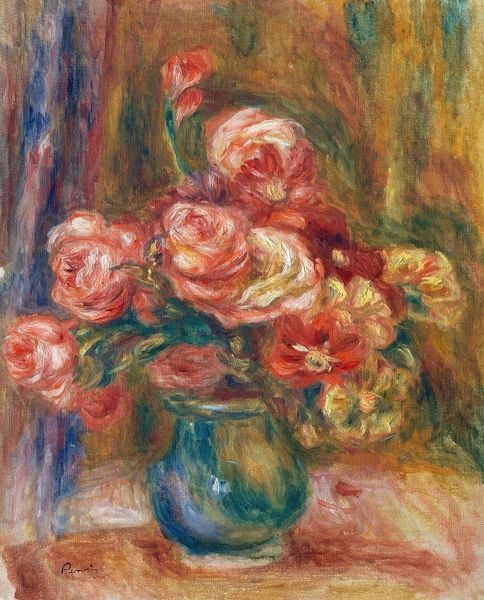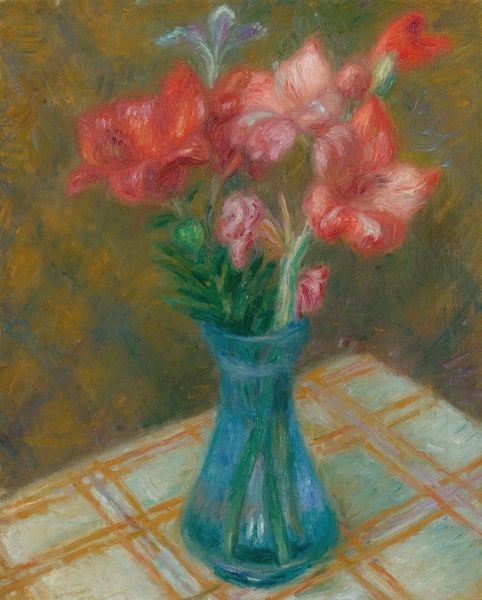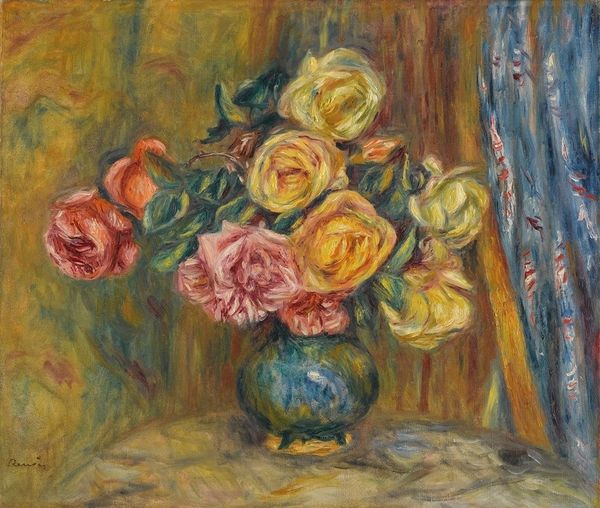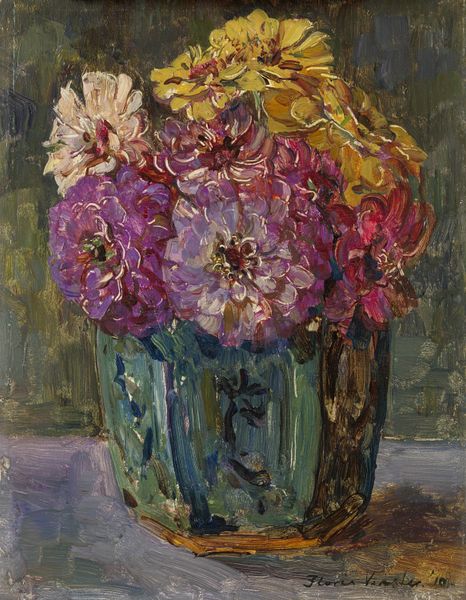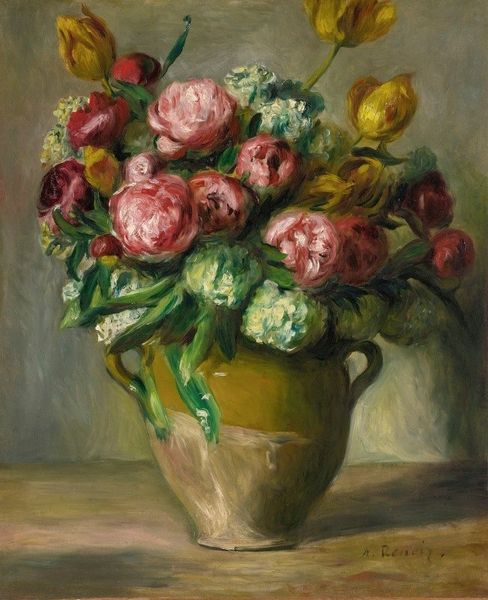
Copyright: Public Domain: Artvee
Editor: This is William Glackens’ "Still life ‘French Bouquet’," painted in 1927 using oil paint. There’s something almost dreamlike about it – a familiar scene, but softly rendered, as if seen through memory. What symbolic significance do you find in it? Curator: Look closely at the recurring motif of the bouquet, a long-established symbol of transience and beauty. Notice how Glackens uses the impasto technique, building up layers of paint? It reminds us of Dutch vanitas paintings. Editor: I see what you mean. The fleeting nature of beauty, perhaps even life itself. Curator: Precisely. But let's not overlook the "French" association in the title. Think about the cultural context of the time. What do the colors and arrangement evoke for you in relation to French culture? Editor: I think of Impressionism and the Parisian art scene – a sense of cultivated beauty and joie de vivre. So it’s more about the aesthetic ideal than somber memento mori. Curator: It could be both. Aren’t our strongest cultural memories and symbols often complex and multilayered? Glackens invites us to consider beauty's power. The bright cobalt of the pitcher holding the bouquet—is it a stable anchor or another object soon to fade away? Editor: That's such an interesting point. The blue vase could represent a kind of idealized container holding something fragile. Curator: Or something potent and intoxicating! Ultimately, "French Bouquet" uses these familiar visual symbols to prompt our reflection. The dialogue between the objects allows us to draw many conclusions. Editor: I never thought about a bouquet offering so much cultural insight! Thanks!
Comments
No comments
Be the first to comment and join the conversation on the ultimate creative platform.
